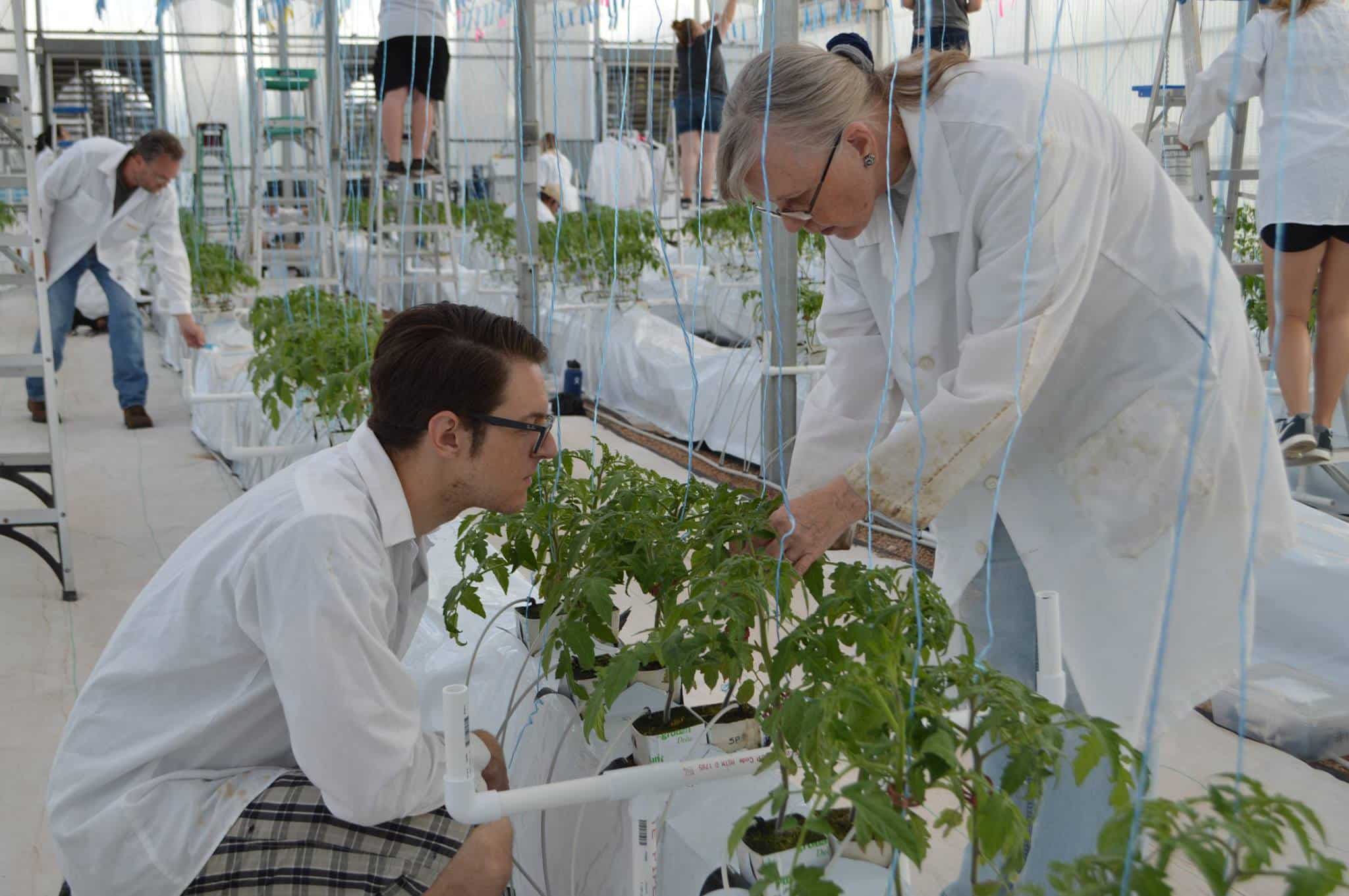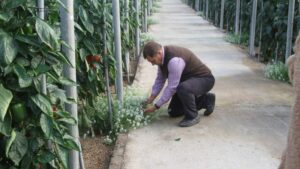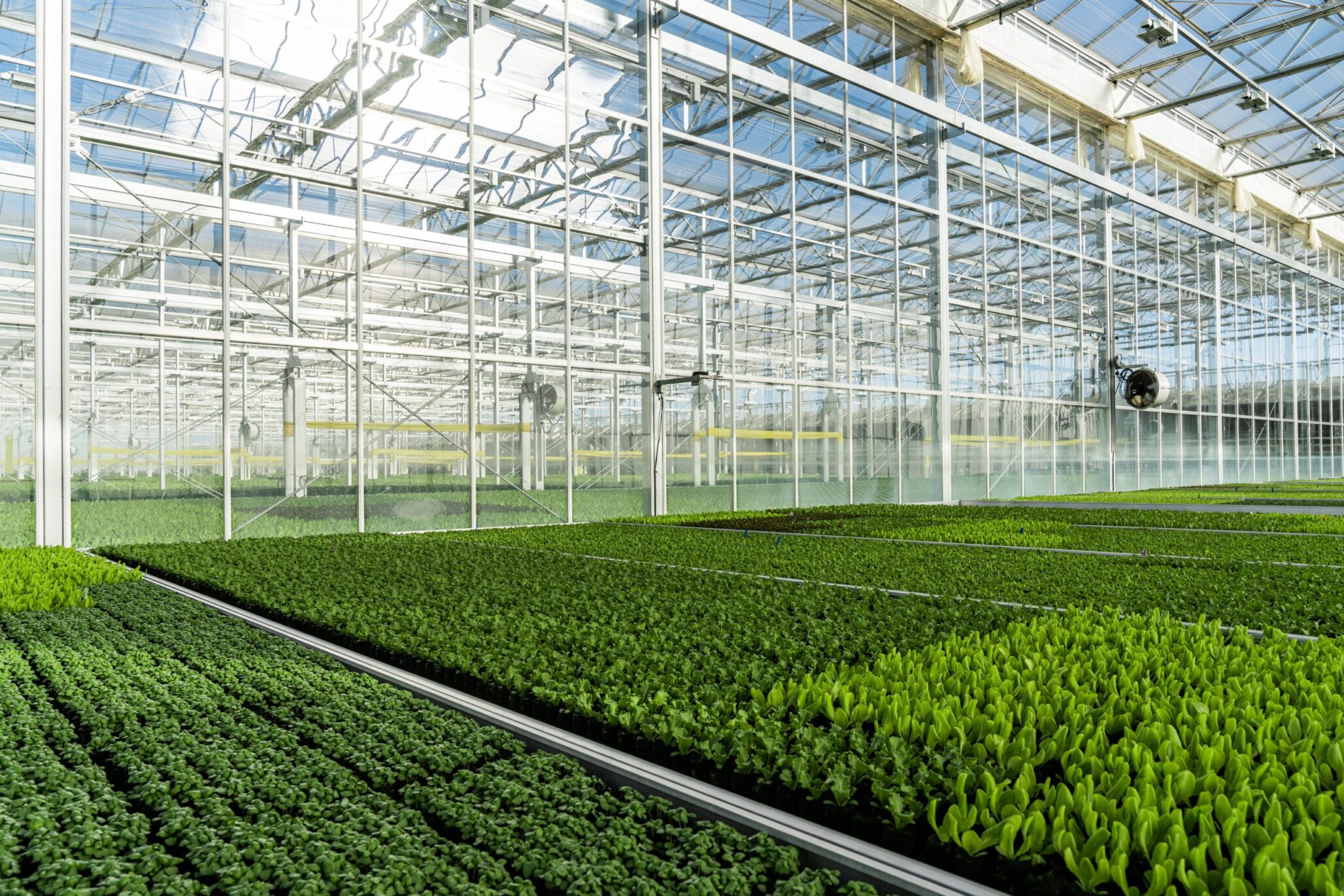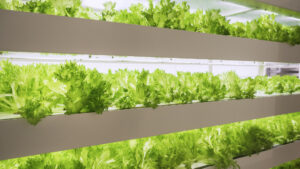Indoor ag brings consumers closer with controlled-climate growing.
Sustainably feeding a growing population in the midst of climate change and other global challenges requires innovative thinking and out-of-the-box approaches. But when faced with this substantial goal, growers and researchers often start to look inside the box, or inside the building at least.
2020 was designated as the International Year of Plant Health, and one of the goals mapped out by the International Plant Protection Convention from the United Nation’s Sustainable Development Goals is No. 12: Ensure sustainable consumption and production patterns, which may mean looking closer at indoor agriculture options that help bring production closer to consumers.
Both greenhouses and vertical agriculture operate indoors, offering benefits such as year-round growing in colder climates, and the opportunity to achieve pesticide-free growing practices and reduced transportation between crops and consumers. However, with a wide-range of technologies to consider, there are many differences along the spectrum of protected agriculture.
Costs to Consider
Gene Giacomelli is a biosystems engineering professor at the University of Arizona (UA) and the former and founding director of the Controlled Environment Agriculture Center (CEAC). He is a fervent believer in controlled environment agriculture, but he knows the only way it can become a successful business is if the crop has a sale price that allows companies to make a profit.
“Think about salable production per unit area of growing space, kilogram per square meter [kg/m2]. Then think about salable production per unit of resources added during the growing period, such as water, electricity, labor and other inputs,” Giacomelli says.
Murat Kacira, professor of biosystems engineering at UA and director of the CEAC, notes that it’s about selecting the best option with the production technology to meet the expectations for the production quantity, quality, consumer and market.
“Every agricultural system has costs associated with it for capital investments and operations, and these depend on technology selected, environmental control strategies, expected production outcome and other factors,” he says. “Resource use efficiency, defined as yield output per resource input, must be the metric when considering and comparing various production approaches, technologies, and strategies for economic viability.”
Anytime supplemental or sole-source lighting is needed, the costs are important to consider.
“Grams per kilowatt-hour [g/kWh] is the big expense for sole-source lighted production facilities,” Giacomelli says.
Neal Barto, research specialist at the Controlled Environment Agriculture Center, prefers greenhouses over vertical agriculture for that reason, although he sees a place for both.
“A vertical farm would make perfect sense for a vacant warehouse in a congested area devoid of fresh produce, for example,” Barto says.
Crop variety and potential is also a consideration.
“Vertical farms typically focus on leafy greens; short height, low light, quick seed-to-harvest time,” Barto says.
Giacomelli says that while leafy greens are the most commonly seen, technically anything can be grown in a greenhouse if the growing compartments and budget are large enough. He’s demonstrated that with the success of his work on the Mars-Lunar greenhouse. It’s about balancing the bottom line with the benefits.
Closer to Consumers
Urban agriculture is gaining in popularity as it addresses sustainability concerns by reducing dependence on fossil fuels for transportation and increases food security in underserved areas.
Viraj Puri, co-founder and chief executive officer of Gotham Greens, believes greenhouses shine by bringing production closer to consumers.
“Greenhouses allow us to grow a reliable and safe supply of fresh produce all-year-round using less water and less land compared to conventional farming,” Puri says. “At the same time, retailers and foodservice operators are increasingly recognizing the reliability, consistency and premium quality of a produce supply that is possible with crops grown under protected cover.”
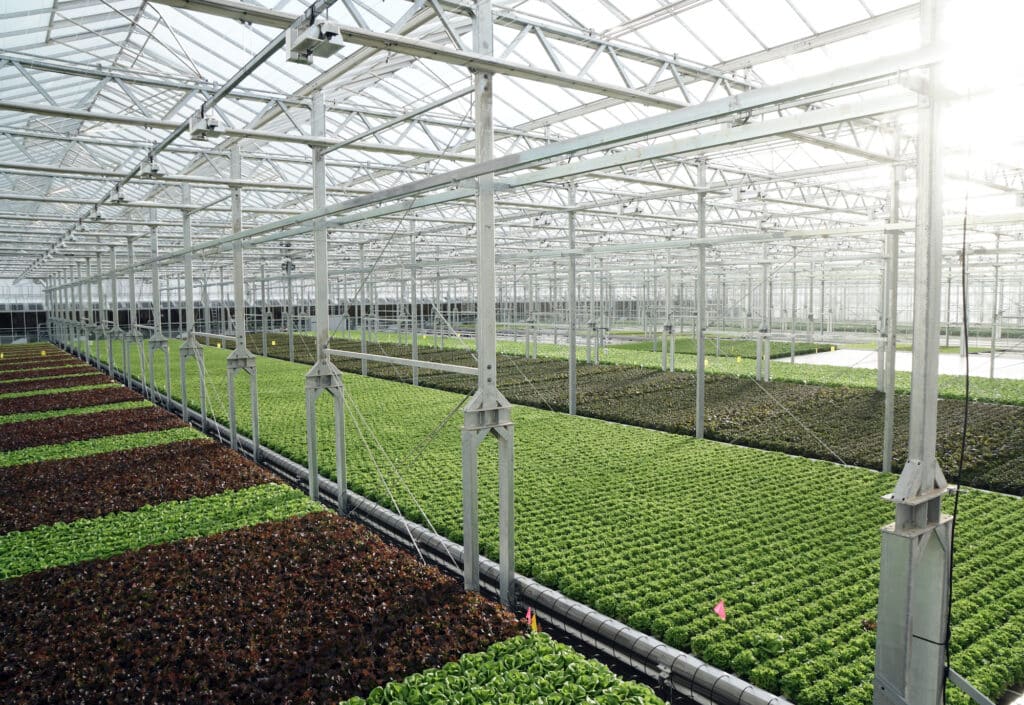
Gotham Greens uses hydroponic systems with 100% renewable electricity-powered greenhouses. In 2011, the company built the first commercial scale rooftop greenhouse facility in the United States at their first location in Brooklyn. Since then, Gotham Greens has expanded its presence with eight greenhouses located in five U.S. states up and down the East Coast and into the Midwest and Mountain regions. Gotham Greens now distributes its produce and fresh food products to more than 30 states to thousands of grocery stores, restaurants and foodservice operations.
Puri believes that freshness is one major greenhouse benefit.
“For many parts of the country, it’s difficult to get fresh, local produce all year round,” he says, mentioning that 95% of lettuce grown in the United States comes from California and Arizona.
In addition, this model has some noteworthy benefits to the company’s overall carbon footprint as well. Rooftop greenhouse locations have plenty of sunlight so less artificial light is needed, and the high-technology greenhouse uses water and nutrients efficiently.
Farming in the Future
Despite their benefits and trending interest from consumers, greenhouse-grown greens don’t represent a large portion of the food consumers eat every day. In fact, it’s a relatively tiny percentage, although it is increasing.
Giacomelli estimates that 60-70% of fresh market tomatoes for the United States are produced in controlled environments in the United States, Mexico and Canada.
“The greenhouse industry is not in competition with the field crop industry. It’s parallel — a different product, a different price point, and with different challenges,” Giacomelli says.
Still, Puri believes there are lessons to be learned from the greenhouse system’s successes.
“Given current pressures on the U.S. food system, one thing is clear: the importance of strengthening our country’s food supply chain through decentralized, regional supply chains,” Puri says.
And greenhouse systems offer complete control of the growing environment, something that can’t be replicated outside but could inspire innovation.
Puri believes that achieving sustainability in traditional agriculture is a complex challenge that involves numerous economic, social and environmental factors, but that focusing on soil health, water management, and biodiversity are key, while working to minimize air and water pollution.
Sustainable Success
As we look to increase food production in the face of climate change, indoor agriculture is here to stay. It’s up to our education systems, investments, and imaginations to determine what role it will play in the coming decades.
Giacomelli says the majority of new greenhouse growers are coming from outside the agriculture industry, and he’d like to see multi-generational open-field farming families begin to invest in greenhouse training as well.

“They can start with a small greenhouse and begin to produce in the offseason, and pretty soon, they may see 10 times the production in that greenhouse as in the field, and that’s when they can begin to think about transitioning their field crops,” he says.
When thinking outside the box, the possibilities truly begin to open up.
Researchers have been working to improve the energy-efficiency of greenhouses by integrating photovoltaics technology to greenhouses, specifically semi-transparent panels or films that still allow optimal light levels to pass through to the plants below.
“There is a promising future with semitransparent and wavelength selective photovoltaics integrated to greenhouses as covering materials, that can provide the light levels and spectrum that will not significantly affect yields while still being able to produce the energy to be used by the production system in the greenhouse, something that we have been researching at the UA-CEAC” Kacira says.
There’s a balance between the amount of electricity the cells generate and the light they allow to pass through.
“If we can achieve effectively that as we look to the future, and can co-produce food as well as the power in the same footprint, there are great opportunities there for innovative, integrated and sustainable food production systems,” Kacira says.
Seeds are the Start
Breeding research could be a next step in the greenhouse industry as current efforts are largely geared toward field agriculture since most crops are primarily grown outdoors.
However, Jenn Frymark, chief greenhouse officer for Gotham Greens, says seed companies are starting to focus breeding efforts on controlled environment agriculture as indoor agriculture becomes a larger purchaser of seeds.
“Indoor producers, both greenhouse and vertical farms, use field lettuce seed varieties. Breeders have been asking producers to try popular field varieties as well as older varieties that may have been ruled out by field growers but that could have appealing traits for indoor growers,” Frymark says.
Common varietal concerns such as powdery mildew, blossom end rot, edema and other issues are not as much of a focus in choosing seeds to use in high-tech greenhouse production.
“I wouldn’t want to see a breeder spend the money to develop a brand-new powdery mildew resistant variety specifically for greenhouses when we can manage that effectively with climate control and sanitation,” Giacomelli says.
Giacomelli is most excited about the potential for plant advances in flavor and nutrition.
“Those traits are a challenge for breeders to focus on for outdoor varieties, because of plant health and transportation concerns. But with greenhouse production, taste and nutrient improvements are where the value is,” Giacomelli says, adding with a laugh that figuring out how to get strawberry varieties that produce 10 times as much fruit per plant would be a nice benefit, too.
Education Efforts
The future of sustainable agriculture lies in encouraging the next generation.
“We need the next generation of graduates to understand both the biology and engineering of growing in controlled environments,” Kacira says.
“The average age of a U.S. farmer is 58,” Barto says. “It’s obvious that we have to get more students involved with growing food.”
There is a lot of ground to cover to fill the needs of an expanding industry in the face of the growing need for sustainable food production, but Giacomelli is hopeful.
“Many of our universities did away with their greenhouse and hydroponics programs when biotechnology really started to expand in the 70s, and we‚Äôre just now seeing those programs come back,” he says.
Of course, some crops just don’t belong indoors, no matter how far outside of the box a grower is willing to go.
“We will never grow corn or soybeans on the earth in a vertical farm,” Giacomelli says. “There’s just no need to, but in a few generations, maybe we could stop growing lettuce on the best farmland because we‚Äôve moved that production inside. Then we could maybe use that land for something even more valuable, or perhaps something protein-rich. I think that’s where we‚Äôll see sustainable change over time.”


